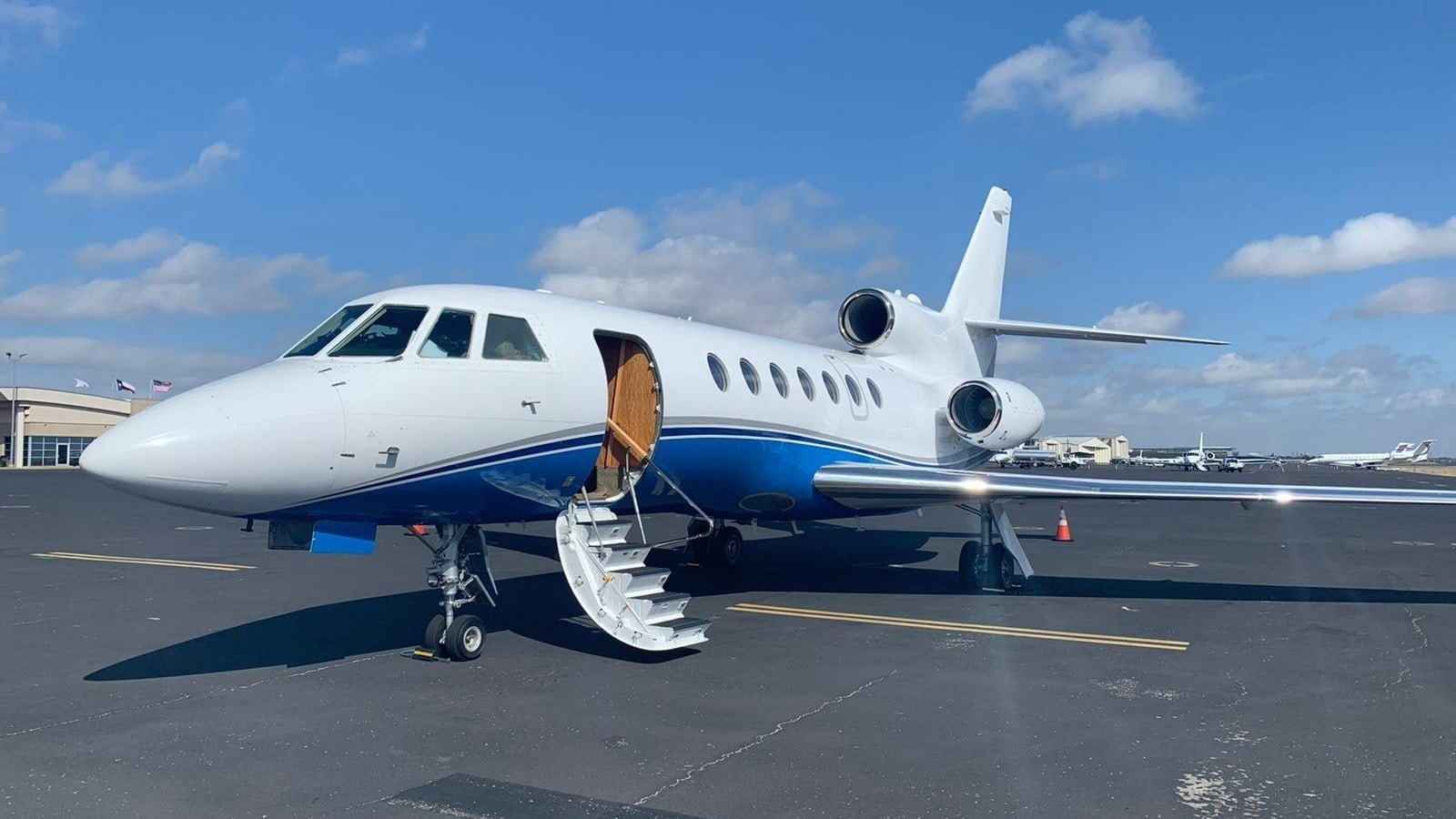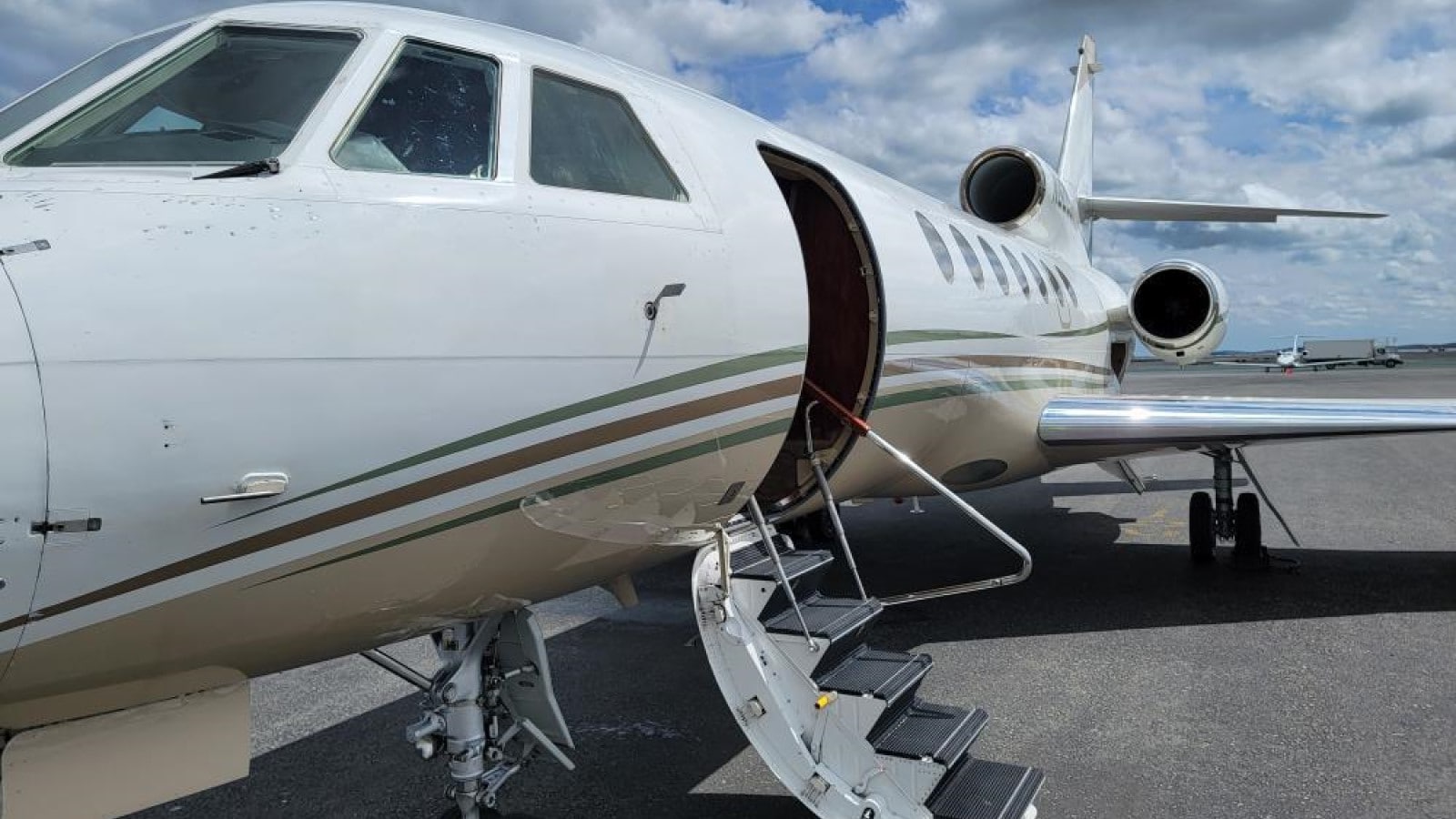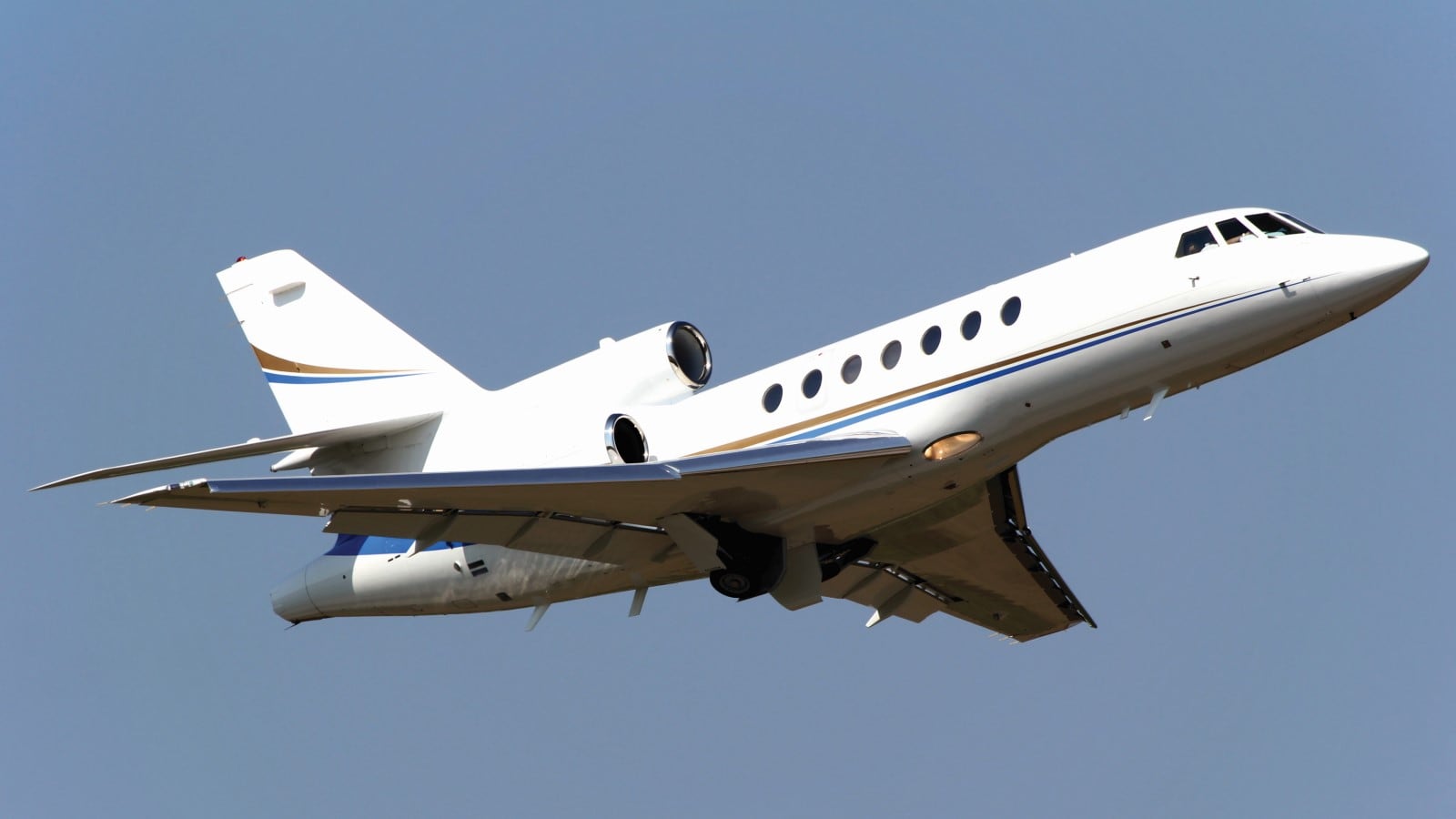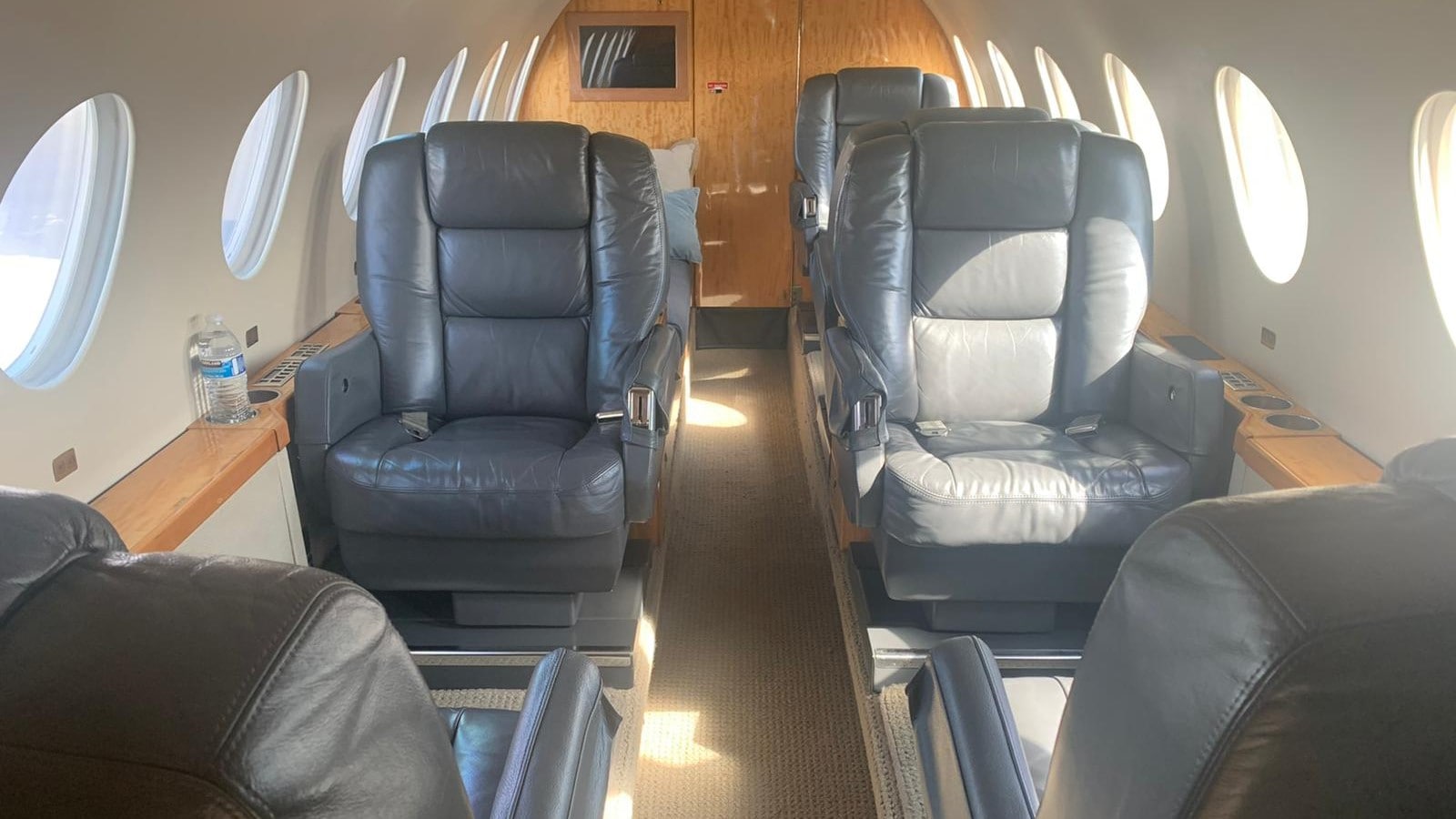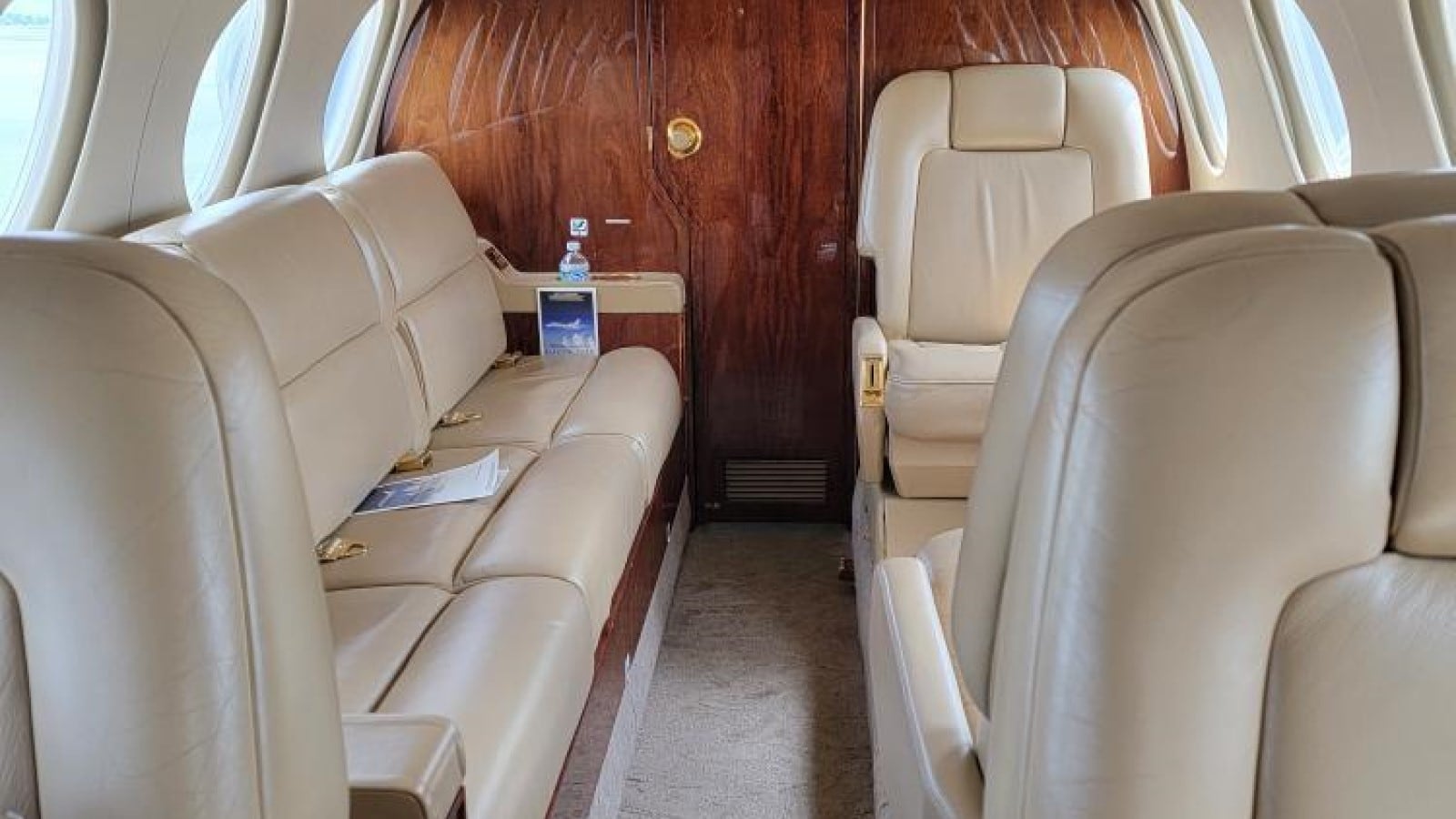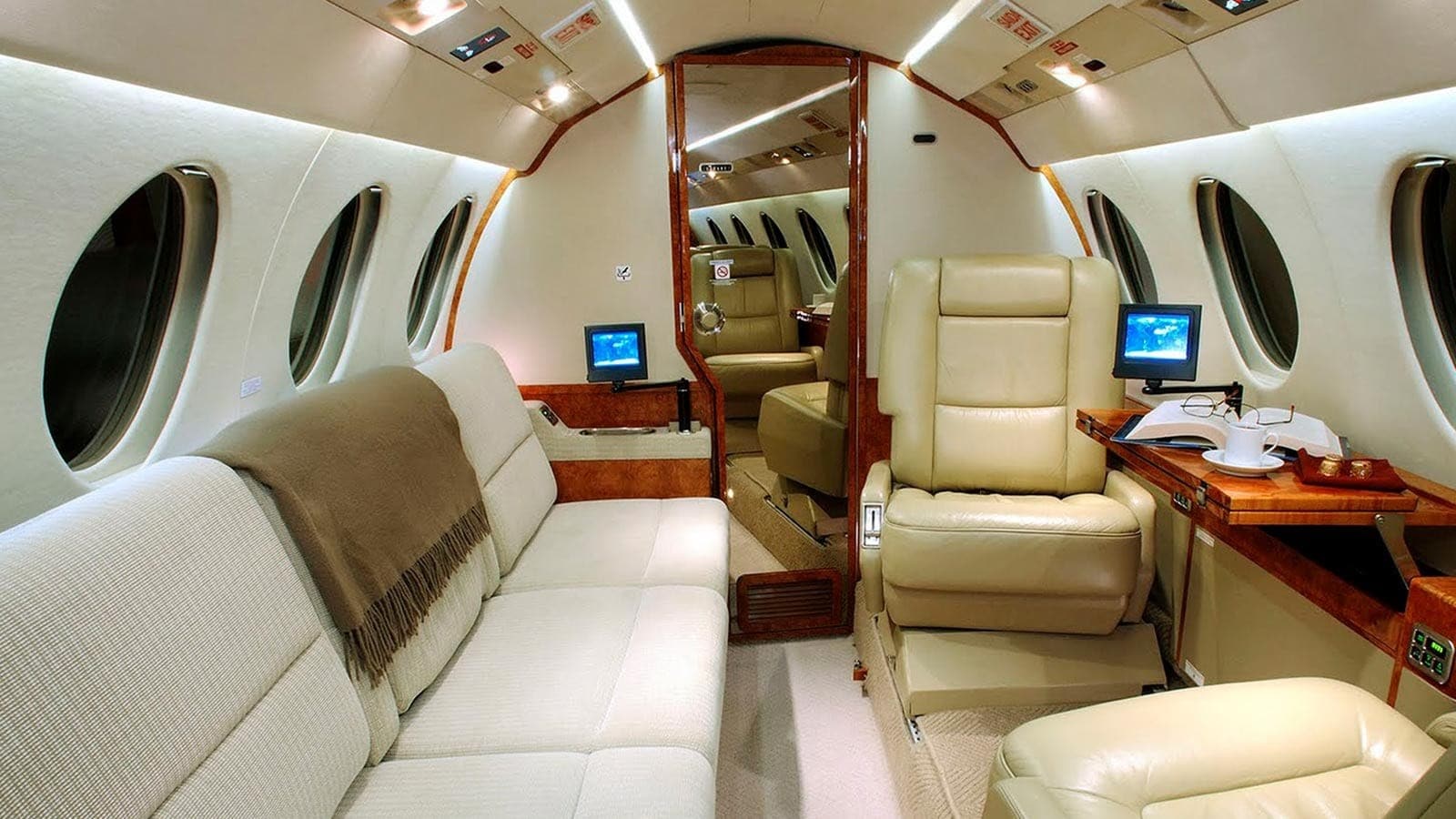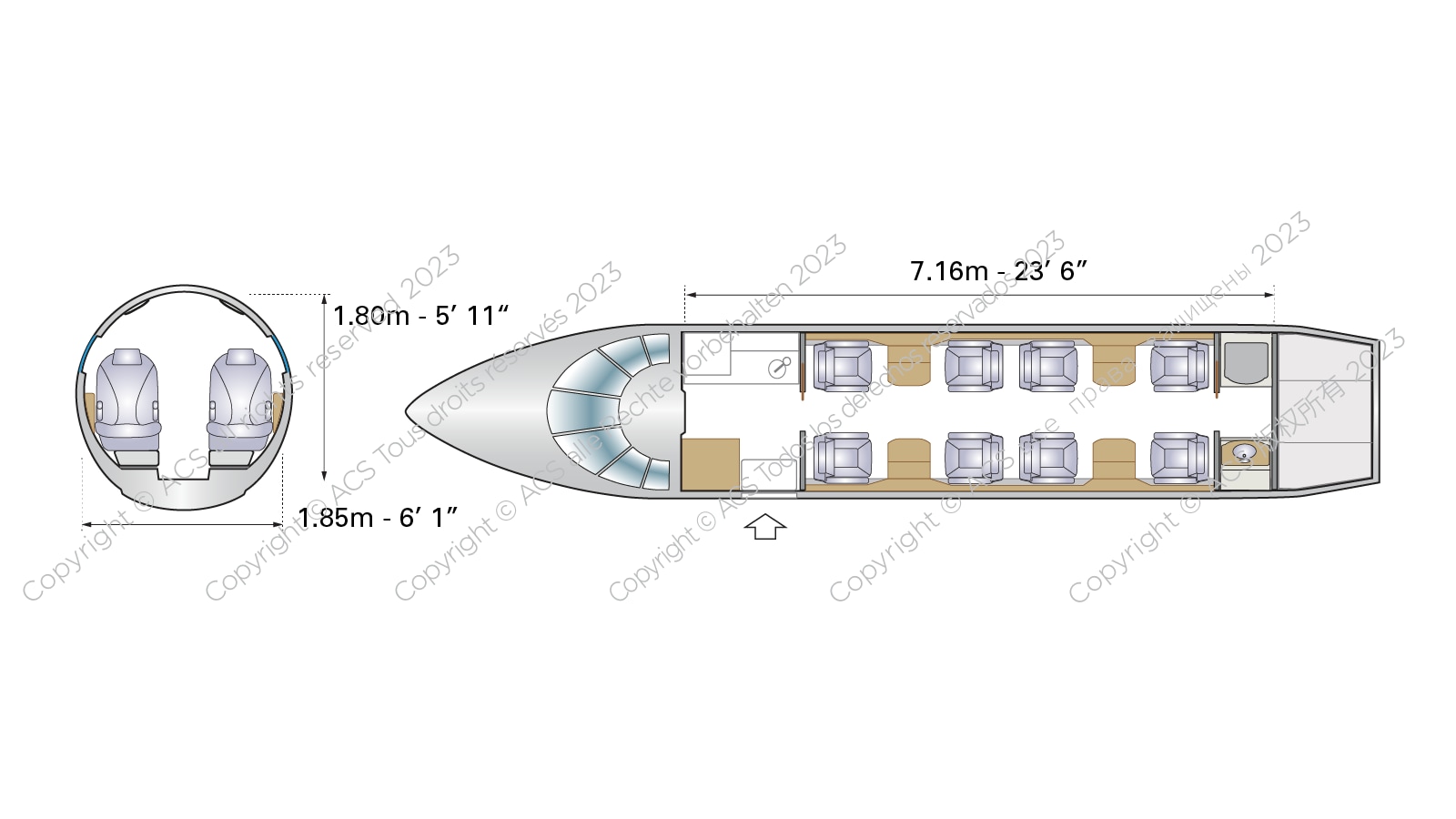DASSAULT FALCON 50 50EX
- Passengers 9
The Dassault Falcon 50 was a revolutionary aircraft that paved the way for future Falcon jets like the Falcon 900 and Falcon 2000. Together with the upgraded 50EX, it remains a strong performer that can fly across both the U.S. and the Atlantic.
About this aircraft
- Delivered in 1980, the Falcon 50 was the first business aircraft that could fly across the Atlantic Ocean in keeping with public transport regulations.
- The upgraded Falcon 50EX followed in 1997 with improved engines and longer range.
- The 50 and 50EX are typically configured to fly nine passengers, with an extra seat in the enclosed lavatory if required.
- With space in the baggage hold for around 10 suitcases, each passenger can bring at least one item of luggage.
- The Falcon 50 can fly non-stop across the United States.
- Production of the Falcon 50 stopped in 1996, while the 50EX ceased in early 2008.
The Dassault Falcon 50 and 50EX are among the most successful corporate jets ever developed, combining impressive performance with a stylish cabin for nine passengers.
Interior design
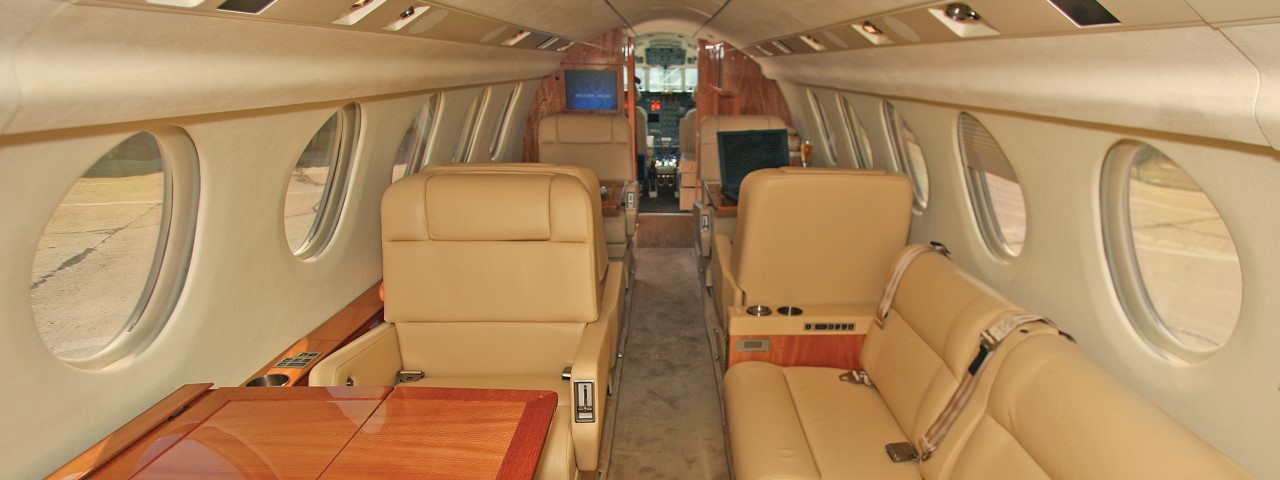
Most Falcon 50s and 50EXs are configured to seat nine passengers across two zones. The front zone usually features a four-seat club separated by two fold-away tables, while the rear has a three-seat divan and two more alternate-facing seats. An eight-seat layout sees the divan swapped for two armchairs to mirror the front section of the cabin.
There’s a galley large enough for preparing hot and cold refreshments, as well as an enclosed lavatory at the rear that can be used as an extra seat if needed.
Below are two examples of a typical configuration found onboard the Falcon 50 and 50EX.


Interesting facts to learn before you fly
- Despite its age, the Falcon 50 was so revolutionary that it still competes with newer aircraft in overall performance and interior luxury.
- The 50EX’s cabin is the same height and width, but the upgraded model boasts more modern comforts, burns less fuel and flies higher and faster than its predecessor.
- All of the aircraft’s baggage compartments are fully pressurised.
Technological features
The original Falcon 50’s three Garrett (Honeywell) TFE731-3 engines provide 3,700 pounds of thrust each, while later modifications feature TFE731-4-1Cs. The Falcon 50EX is fitted with three range-boosting Honeywell TFE731-40 turbofans.
The Falcon 50’s cockpit features an ADC 80 air data computer, Primus colour weather radar, Collins FCS-80 F autopilot computer, and dual VHF communication system. Later upgrades included Collins ProLine 4 series avionics.
History
Dassault began designing the Falcon 50 in 1974 to meet increased demand for longer-range air travel in the U.S. market. The first prototype flew in November 1976 and it received French and U.S. certification in 1979, with the first delivery made in 1980.
A clear departure from its predecessors, the revolutionary Falcon 50 was the world’s first civil plane with supercritical wings (later incorporated into Dassault’s popular 900 and 2000 lines). A record-breaking performer, it was the first transoceanic Falcon jet and, according to Dassault, the first business aircraft capable of flying across the Atlantic.
Dassault stopped producing the Falcon 50 in 1996 to make way for the longer-range 50EX, which featured Collins ProLine 4 avionics and could climb to 41,000 feet in 23 minutes.
Manufacturer
Dassault Aviation’s history dates back to the dawn of aviation. Marcel Bloch (later known as Marcel Dassault) founded the company following a childhood fascination with aesthetics and innovation and it went on to become one of the world’s leading aircraft manufacturers.
Following the oil shock of 1973-74 and the Iranian crisis in 1979, the global economy felt the impact of rising raw material prices. Dassault bolstered its fundamentals by developing exports of civil and military aircraft against a backdrop of increasingly fierce international competition. Today, the brand holds a special place in the industry as the only global aerospace company still owned by its founding family.
Cost
A pre-owned Dassault Falcon 50 costs between $2 million and $3.5 million (USD). The average price of a pre-owned Falcon 50EX is around $6.95 million.
Charter rates
Charter rates for the Dassault Falcon 50 or 50EX can vary greatly depending on the length of the journey you have planned, as well as the airports you decide to fly in and out of.
Wet lease rates
ACMI (Aircraft, Crew, Maintenance, Insurance) wet lease rates for the Dassault Falcon 50 or 50EX can vary depending on the age of the aircraft, lease term length, number of guaranteed block hours and average cycle ratio.
Contact our offices to book a private charter flight on the Dassault Falcon 50 or 50EX. For information on other private jets to charter, browse our list of available aircraft.
